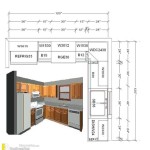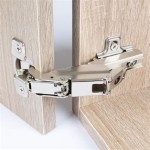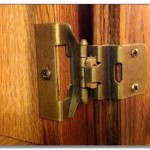Kitchen Cabinet Moulding Installation: A Comprehensive Guide
Kitchen cabinet moulding installation is a valuable addition to any kitchen renovation or upgrade project. Moulding serves not only an aesthetic purpose, adding a finished and decorative touch to cabinets, but also can conceal gaps between cabinets and the ceiling or walls, improving the overall appearance and potentially increasing the value of the home.
This article provides a comprehensive guide to kitchen cabinet moulding installation, covering various aspects from planning and preparation to the actual installation process. Understanding the different types of moulding, the necessary tools, and the proper techniques is crucial for achieving professional-looking results. Careful planning and attention to detail are essential for a successful and satisfying outcome.
The complexity of the project can vary depending on the type of moulding selected, the configuration of the cabinets, and the overall design of the kitchen. However, with the right knowledge and preparation, many homeowners can successfully tackle this project as a DIY endeavor. For more complex installations or for those less experienced with woodworking, professional installation is a recommended alternative.
Planning and Preparation: A Foundational Step
Before commencing any physical work, thorough planning and preparation are essential for a successful kitchen cabinet moulding installation. This stage involves several critical steps, including assessing the space, selecting the appropriate moulding, and gathering the necessary tools and materials. A well-defined plan not only streamlines the installation process but also minimizes potential errors and ensures a professional finish.
The first step is to carefully assess the layout of the kitchen cabinets. Measure the length of the cabinets where the moulding will be installed. Account for any corners, angles, or obstructions that may influence the moulding design and installation process. Accurate measurements are crucial for ordering the correct amount of moulding and minimizing waste.
Next, consider the style and design of the kitchen cabinets and the overall aesthetic of the kitchen. Select moulding that complements the existing design elements. Common moulding styles include crown moulding, which is typically installed at the top of cabinets to add height and decorative flair. Light rail moulding is often installed under wall cabinets to conceal under-cabinet lighting and provide a finished look. Other options include scribe moulding, used to fill gaps between cabinets and walls, and decorative trim, which can be applied to cabinet doors or panels for added detail.
Once the moulding style is selected, choose the material. Common materials include wood, MDF (Medium-Density Fiberboard), and PVC. Wood moulding offers a classic look and can be stained or painted to match the cabinets. MDF is a cost-effective alternative that is easy to work with and provides a smooth surface for painting. PVC is moisture-resistant and ideal for kitchens where humidity is a concern.
Finally, gather the necessary tools and materials. Essential tools include a measuring tape, pencil, level, miter saw, coping saw (for complex angles), nail gun or hammer, wood glue, painter's caulk, and sandpaper. Materials include the selected moulding, nails or screws, wood filler, primer, and paint or stain. Ensure all tools are in good working condition and that you have an adequate supply of materials before beginning the installation.
The Installation Process: Step-by-Step Guide
The installation process itself requires careful attention to detail and precision. The steps involved may vary depending on the type of moulding being installed, but the following provides a general outline of the process. Prioritize safety by wearing appropriate protective gear, such as safety glasses and gloves, throughout the installation.
Begin by preparing the moulding. If the moulding is unfinished, apply primer and paint or stain according to the manufacturer's instructions. Allow the finish to dry completely before proceeding with the installation. This step ensures a consistent and durable finish that will enhance the appearance of the cabinets.
Next, cut the moulding to the required lengths using a miter saw. Accurate cuts are critical for a seamless and professional-looking installation. For straight runs, cut the moulding to the exact length of the cabinet. For inside corners, use a coping saw to create a cope joint, which allows the moulding to fit snugly against the adjacent piece. For outside corners, use a miter saw to cut the moulding at a 45-degree angle.
Once the moulding is cut, apply a bead of wood glue to the back of the moulding and position it against the cabinet. Use a nail gun or hammer and nails to secure the moulding to the cabinet. Space the nails evenly along the length of the moulding, ensuring that they penetrate the cabinet frame or the cabinet box to provide a secure hold. If using a hammer, consider using a nail set to countersink the nails, preventing damage to the moulding surface.
After the moulding is secured, inspect the joints for any gaps or imperfections. Fill any gaps with wood filler and allow it to dry completely. Sand the filled areas smooth and apply a touch-up coat of paint or stain to blend the repair with the surrounding finish. Apply painter's caulk along the top and bottom edges of the moulding to conceal any remaining gaps and create a clean, professional look.
Repeat these steps for each section of moulding, taking care to align the joints. Periodically check the alignment and level of the moulding to ensure a consistent and uniform appearance. Pay particular attention to corners and angles, as these areas can be challenging to install properly. If necessary, make adjustments using shims or additional nails to achieve a perfect fit.
Addressing Common Challenges and Troubleshooting
Even with careful planning and execution, challenges can arise during the kitchen cabinet moulding installation process. Understanding these potential issues and knowing how to address them is crucial for achieving a successful outcome. Common challenges include uneven surfaces, misaligned corners, and difficulty concealing gaps.
One common challenge is dealing with uneven surfaces. Walls and ceilings are rarely perfectly straight, which can make it difficult to install moulding flush against the surface. To address this issue, use shims to fill any gaps between the moulding and the wall or ceiling. Carefully position the shims behind the moulding and secure them with nails or screws. Once the moulding is securely attached, trim any excess shim material with a utility knife.
Misaligned corners are another common challenge. This can occur due to inaccurate measurements, imprecise cuts, or variations in the angle of the corner. To correct misaligned corners, use a block plane or sandpaper to adjust the angle of the cut. Alternatively, use painter's caulk to fill any gaps and create a smooth, blended transition. In some cases, it may be necessary to recut the moulding to achieve a perfect fit.
Concealing gaps between the moulding and the cabinet or wall can also be challenging. Painter's caulk is an effective solution for filling small gaps. Apply a bead of caulk along the edge of the moulding and smooth it with a damp cloth or sponge. For larger gaps, use wood filler to fill the gap and sand it smooth before applying caulk and paint.
Another potential issue is splitting or cracking the moulding when nailing. To prevent this, pre-drill pilot holes before driving the nails. This reduces the pressure on the moulding and helps prevent it from splitting. Alternatively, use a nail gun with adjustable pressure settings to minimize the risk of damage.
If the moulding is not adhering properly to the cabinet, ensure that the surface is clean and free of dust or grease. Use a degreasing cleanser to clean the surface before applying glue and nails. In some cases, it may be necessary to use a stronger adhesive or additional nails to secure the moulding firmly.
By understanding these common challenges and implementing the appropriate solutions, it is possible to overcome obstacles and achieve a professional-looking kitchen cabinet moulding installation. Patience, attention to detail, and a willingness to adapt to unforeseen circumstances are essential for success.
In summary, kitchen cabinet moulding installation enhances the kitchen's aesthetic appeal. Careful planning, precise execution, and problem-solving skills ensure a successful project. The knowledge of tools, materials, and techniques is paramount for achieving professional-level results.

Adding Crown Molding To Kitchen Cabinets Young House Love

7 Types Of Cabinet Moldings And How To Use Them Properly

Adding Moldings To Your Kitchen Cabinets Remodelando La Casa

10 Types Of Kitchen Cabinet Molding For Your Home

Adding Crown Moulding To Wall Kitchen Cabinets Momplex Vanilla Ana White

Diy Kitchen Cabinet Upgrade With Paint And Crown Molding

How To Add Crown Molding Kitchen Cabinets Abby Organizes

Kitchen Cabinet Crown Molding Reality Daydream

How To Add Trim And Paint Your Laminate Cabinets

How To Add Crown Molding Kitchen Cabinets Abby Organizes
Related Posts








